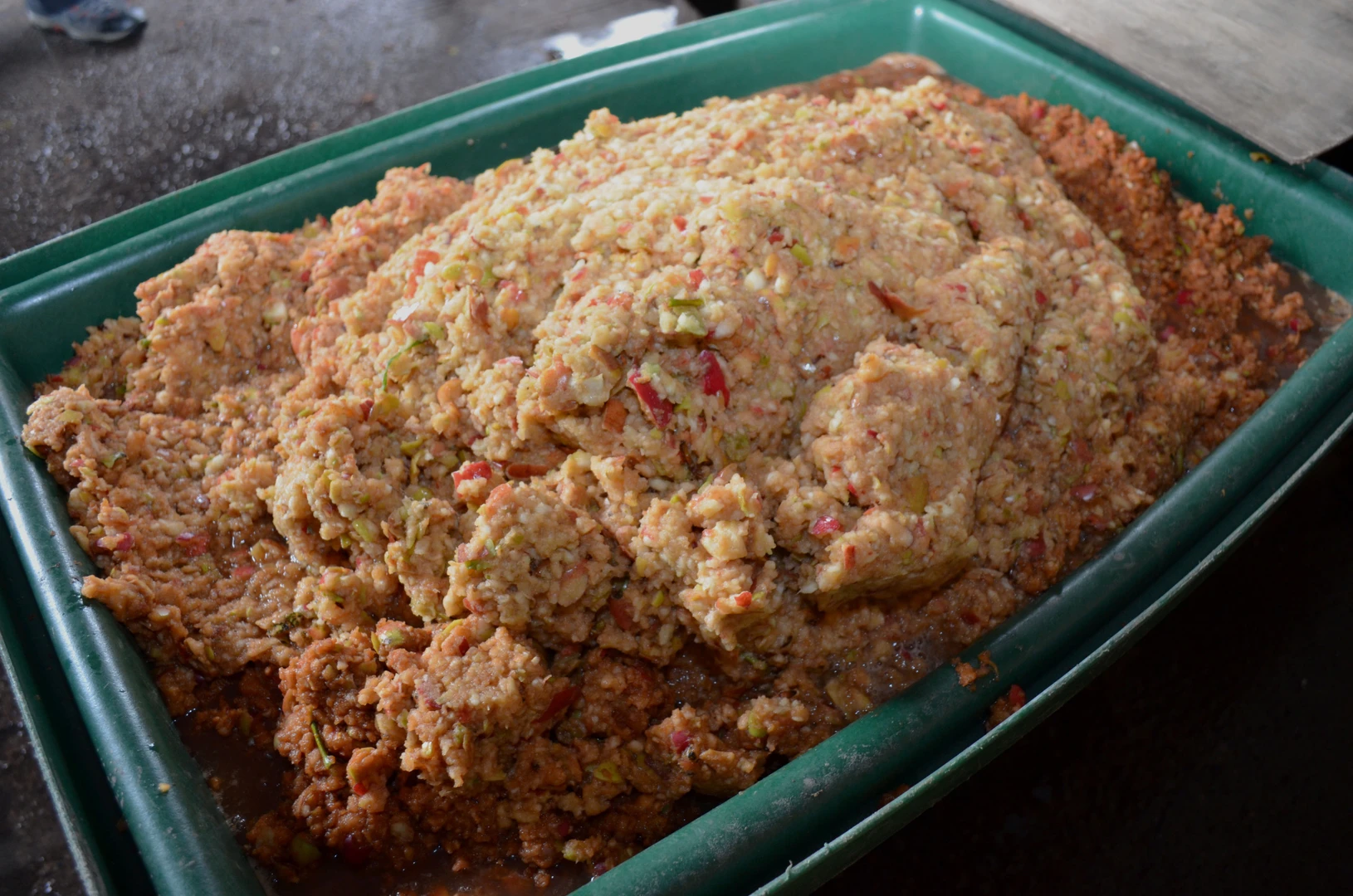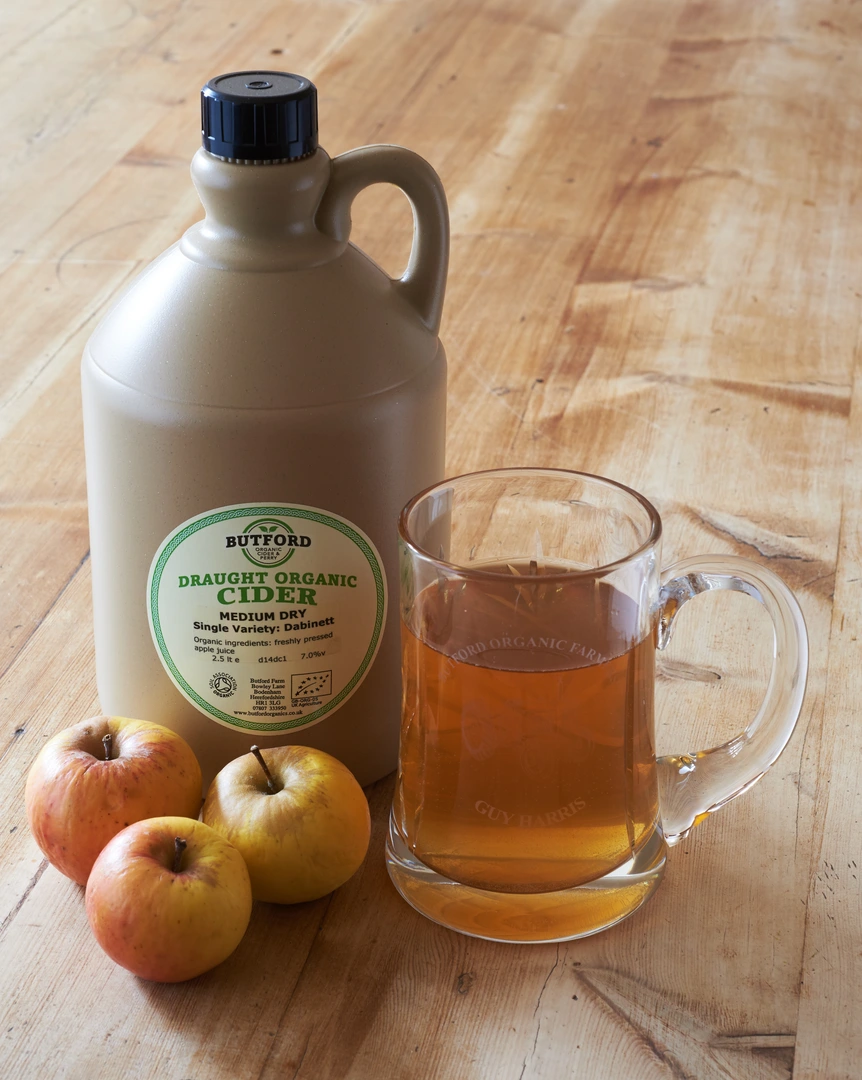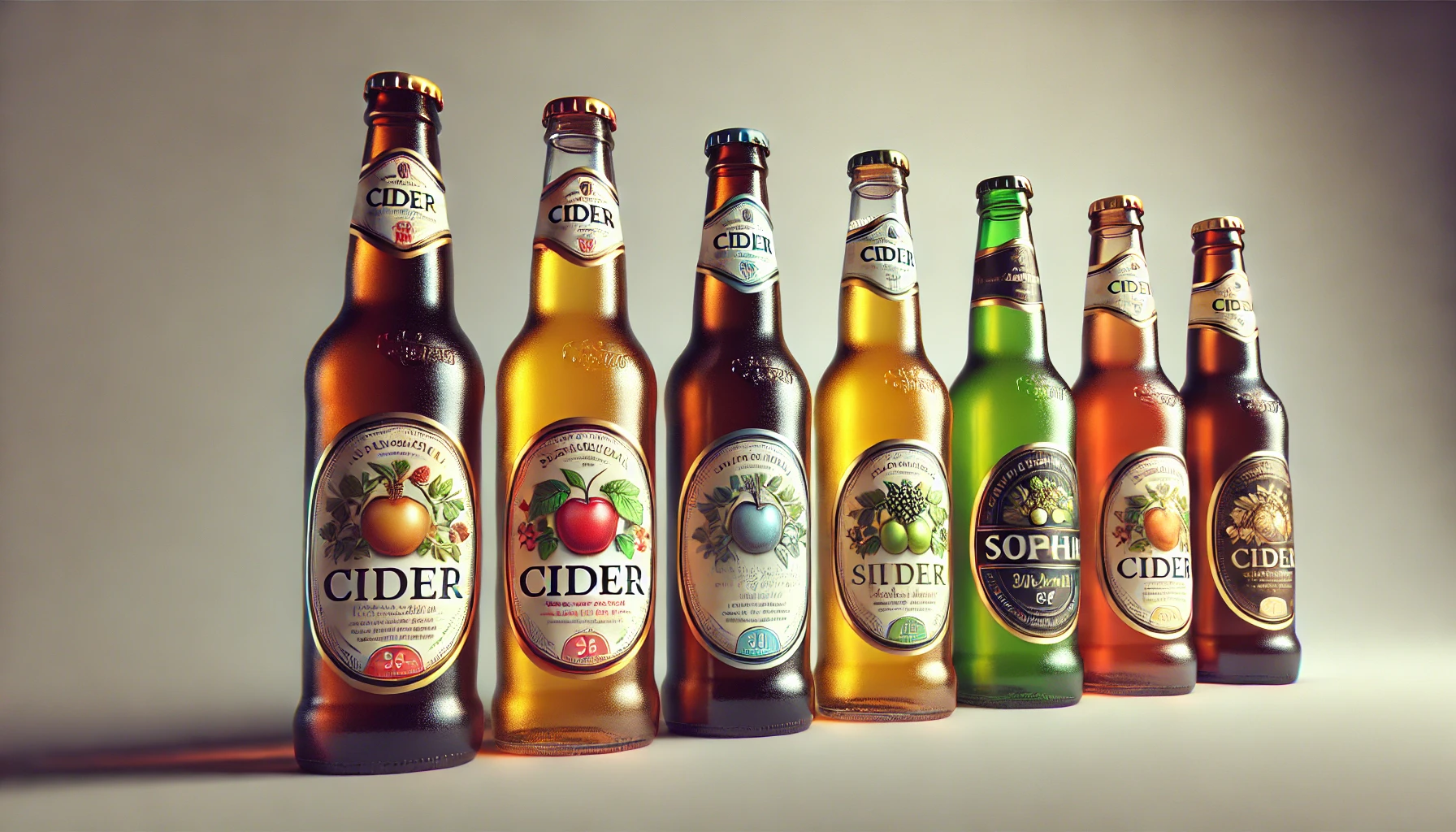The Science of blending
At the core of cider-making is the careful selection and blending of apple varieties. Each type brings its own set of characteristics – sweet, acidic, aromatic, and astringent. This balance is crucial, as rarely does a single variety encapsulate all desired traits.
A common mix could be 50% sweet and 50% acidic, like Perfect Harmony, which has a medium-sweet taste. This combination creates a cider with a rich and complex flavour profile. Many other examples exist with Dunkertons having a whole range of blended options with up to 14 varieties included in one product.
| Apple Varietal | Taste Profile | Best Used For |
|---|---|---|
| Bittersweet | Rich and slightly astringent | Full-bodied ciders |
| Sweet | Fragrant and mild | Lighter, sweeter ciders |
| Sharp | High acidity | Bright, refreshing blends |
| Bittersharp | Complex balance of bitterness and acidity | Distinctive, robust blends |
Selecting the right apples
Choosing the right cider apples is a critical step in cider making. A wise cider maker carefully selects a variety of apples, balancing sweet, tart, and bland flavours. We use bland apples as a base for juice and fermentables. Tart and sweet apples add acidity and sweetness to the blend.
Some of the most popular apples include Kingston Black and Yarlington Mill. We make multiple products using only Dabinnet and Brown Snout apples, such as Infinite Possibilities and Annulet cider.
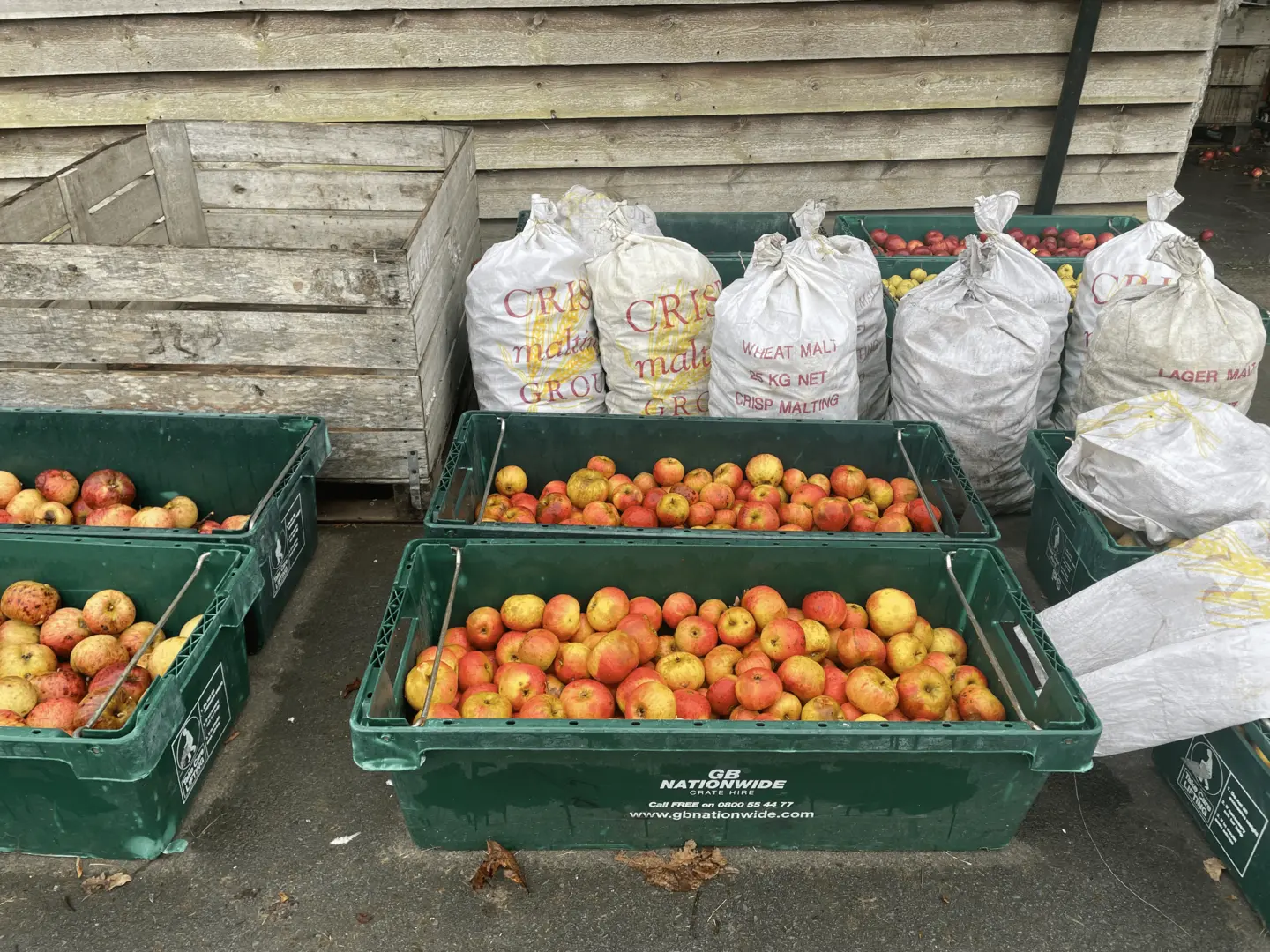
The process of blending
Blending in cider production can be approached in two distinct ways, each contributing uniquely to the final flavour profile.
1. Blending During Production:
The most popular method involves mixing two types of apples during the initial stages of cider making. This process starts just like single-variety ciders: grinding the apples and then pressing them to extract the juice. However, the key difference lies in the variety of apples used. Instead of relying on a single type, this method combines two different kinds, introducing a more complex flavour right from the beginning. The type of press employed—be it a traditional wooden press or a modern electric crusher—also plays a significant role in shaping the cider’s taste. The pressing stage is crucial as it determines the amount of juice extracted and, consequently, the depth of flavour. Blending at this stage allows for a harmonious integration of flavours, as the juices from the different apple varieties mingle and ferment together.
2. Post-Fermentation Blending
Another approach is to blend the juices after fermentation. In this method, each apple variety is processed separately—ground, pressed, and fermented into cider. Only after the fermentation process is complete, the individual ciders are mixed together. This technique allows for precise control over the flavour balance, as the cider maker can adjust the proportions based on the taste profiles of the individual batches. It’s a method often chosen when aiming for a specific flavour target or when working with apple varieties that have drastically different fermentation characteristics.
Ultimately, the choice of blending method depends on the cider producer’s preference and the desired outcome. While blending during production is more popular due to its integrated and complex flavour development, post-fermentation blending offers more control and precision. Both methods have their merits and contribute uniquely to the world of cider-making.
Customizing Your Cider Blend
Cider-making is an arena for creativity. Experimenting with factors other than just apples is another great distinguisher. For instance, adding adjunct sugars and anise can help craft mulled cider, while choosing different yeast strains can influence the cider’s aroma and flavour profile. This customization is what makes each batch of cider unique, reflecting the cider maker’s personal taste and style.
Regional Variations
Cider blends vary widely across regions, each with its own legacy and preferences. Ciders in the west country such as Somerset and Herefordshire, are strong. Bittersweet apples make them a full-bodied flavour and sometimes more alcoholic. The East of England, particularly Suffolk and Norfolk, produces lighter and more acidic ciders. This is because of the abundance of cooking and sweet apples in the region.
Some of our favourite blends
Perfect Harmony Cider
Perfect Harmony combines strong Browns apples from the West Midlands with balanced Dabinett apples from Somerset. The Browns apple is strong and complex, while the Dabinett is tart and sweet, adding richness and character. This mix makes a tasty, medium-sweet cider that shows the best of both apples.

Black Fox Cider
Handcrafted with up to 14 cider apple varieties, this cider is a unique blend. It has a rounded taste, tangy finish, and light honey colour.
Phizzy 500 cider
Phizzy 500 Cider showcases the synergy between the balanced Dabinett and the astringent Vilberie apples. The Viliberie and Dabinett apples are combined to make a strong, fizzy cider with a special taste. It is bottled when fermentation is almost done to have the best bubbles.
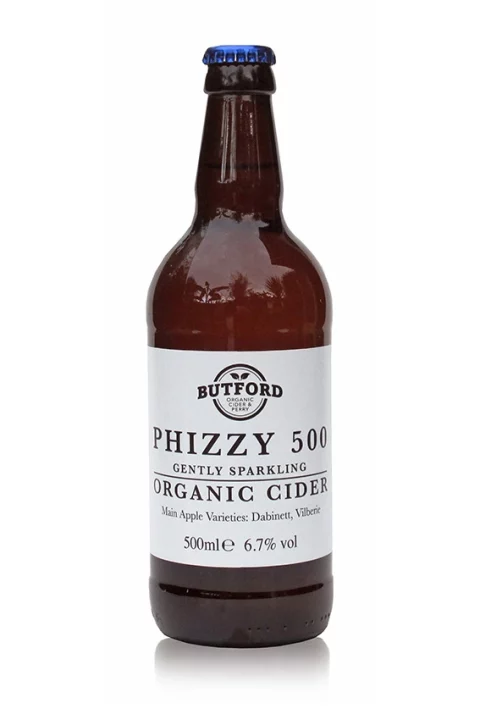
FAQ
What are cider blends?
Cider blends are beverages made by combining different types of apple ciders, and sometimes even other fruit ciders, to create unique flavour profiles. Either during, or after milling and pressing.
How do you choose the right apple varietals for blending?
Selection is based on the desired taste, balance of sweetness, acidity, tannins, and the overall complexity of the flavours.
Can I visit Butford Organics to learn more about cider blending?
Absolutely! We welcome guests to learn about our process and taste our range of cider blends. Contact us for more information on cidery tours.


